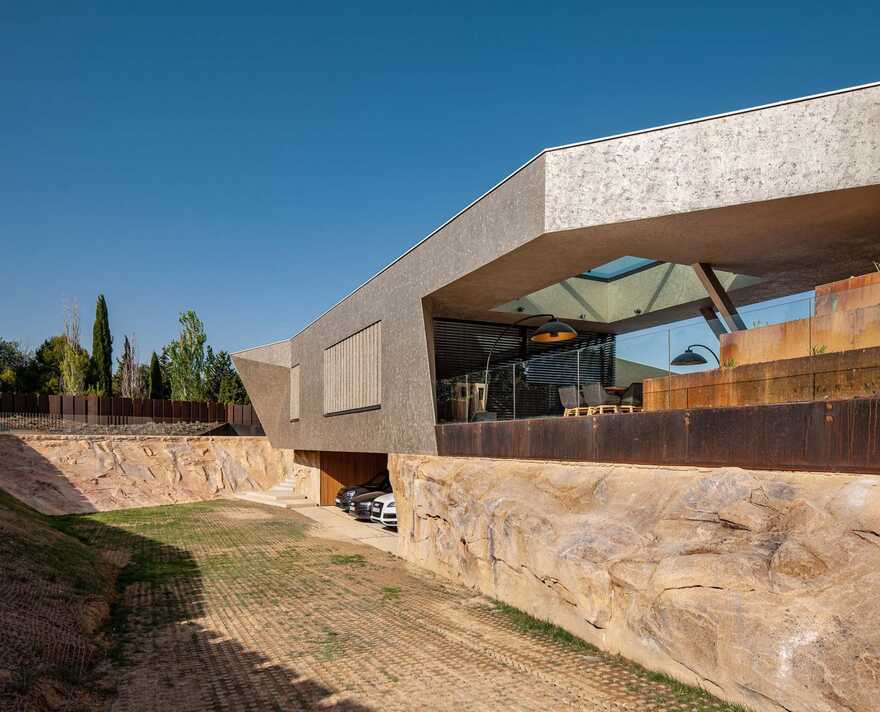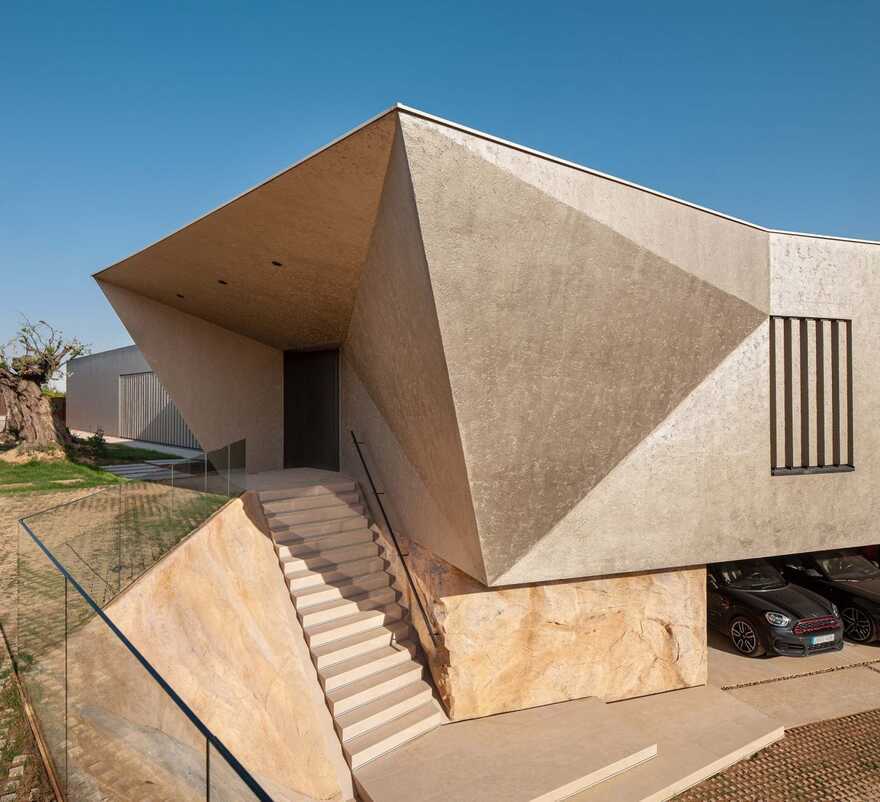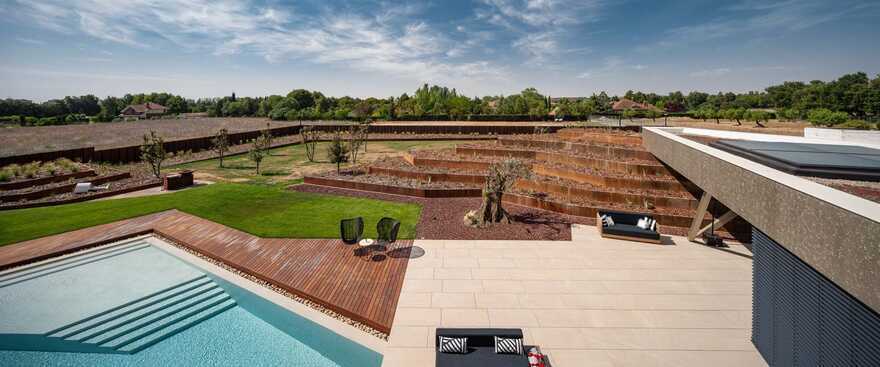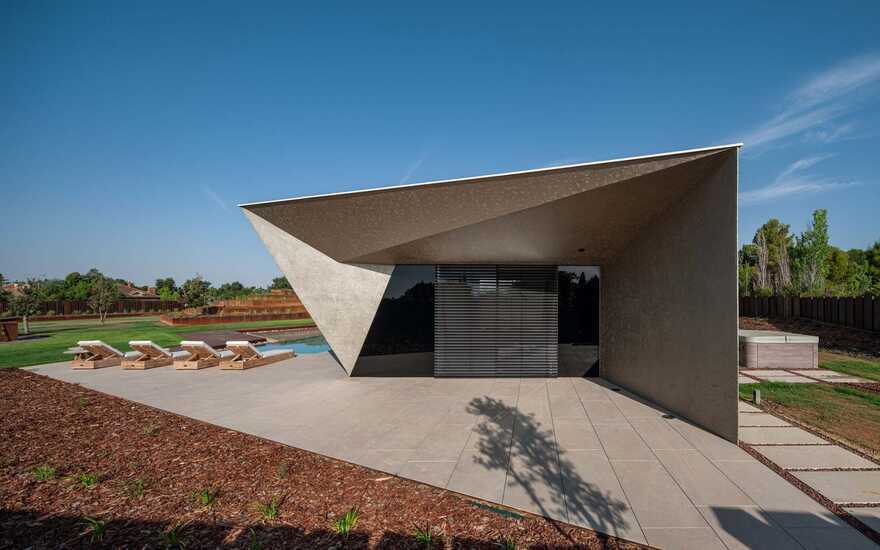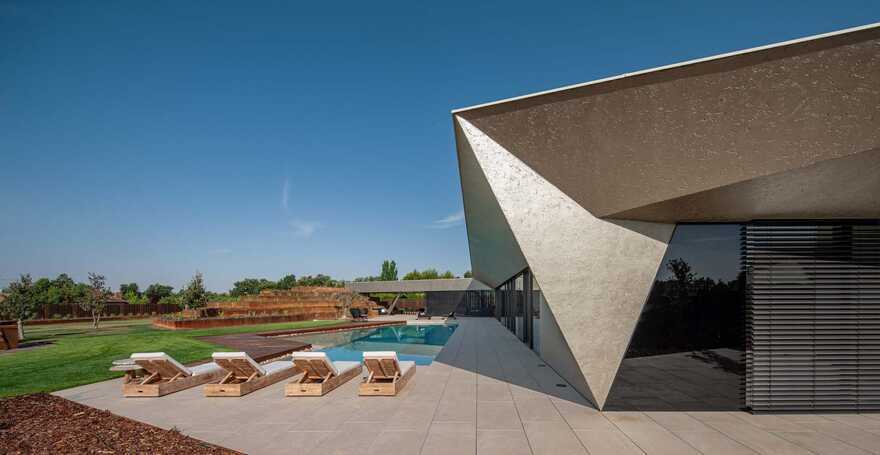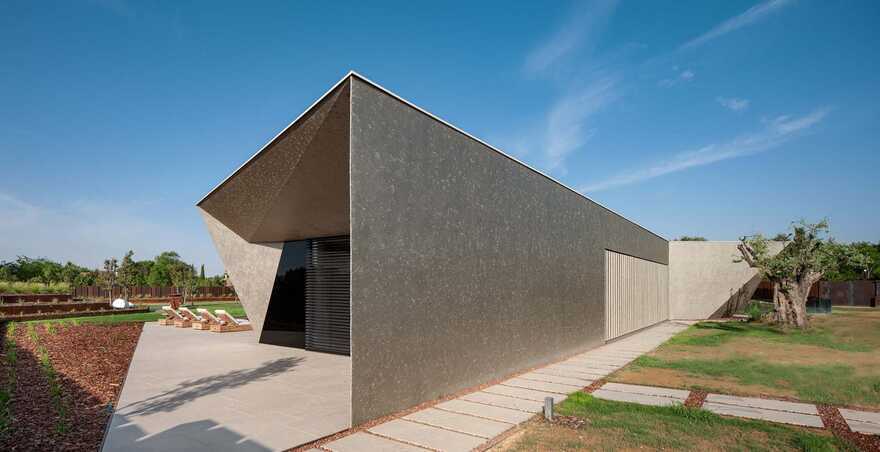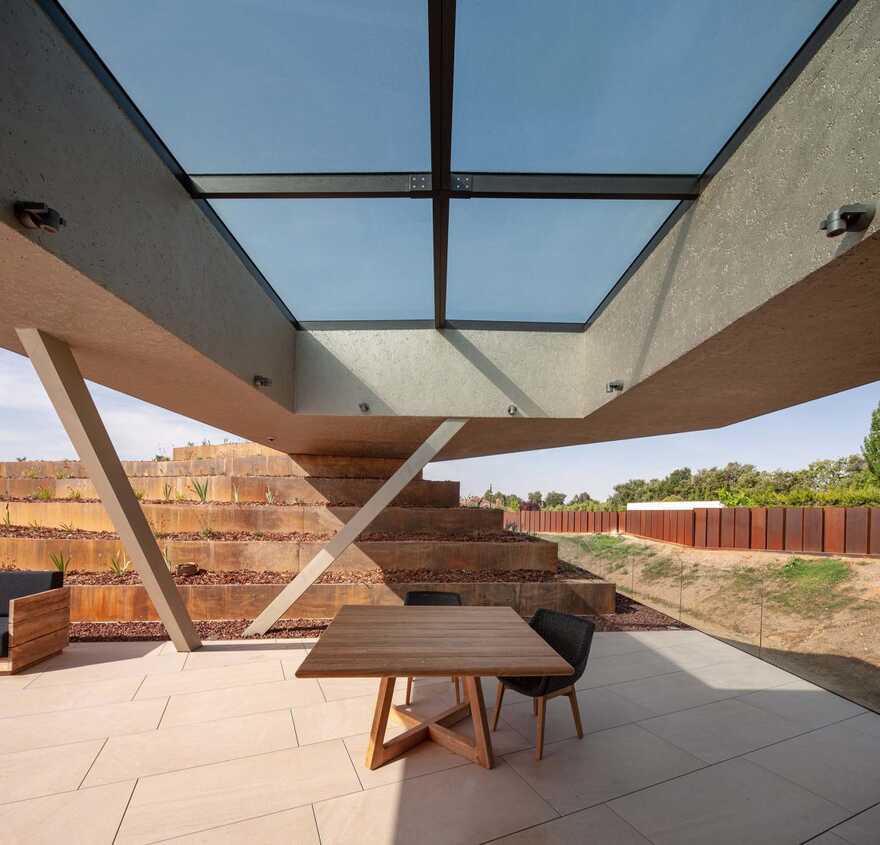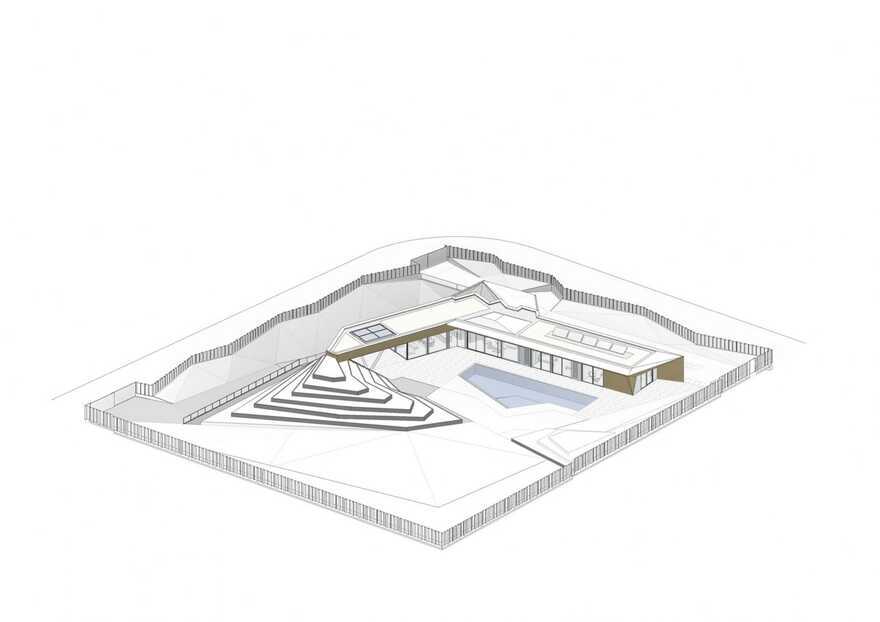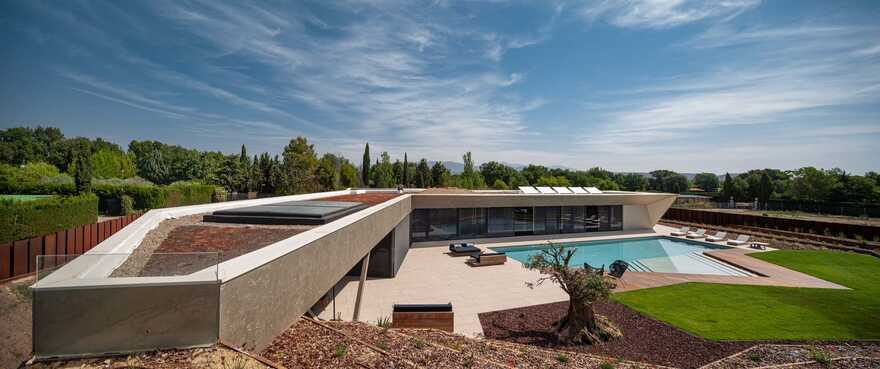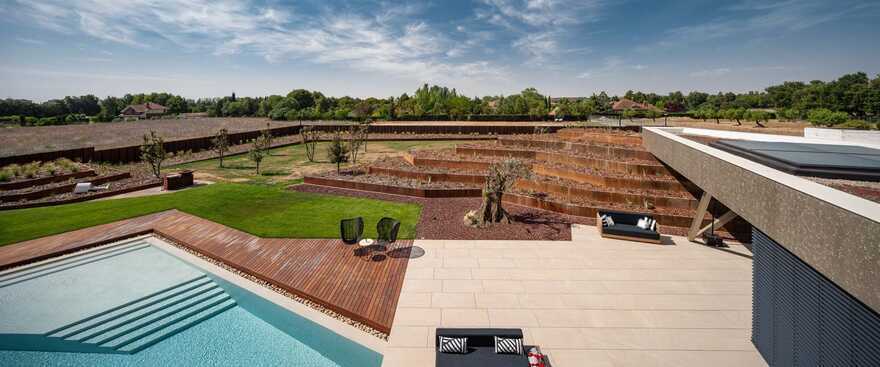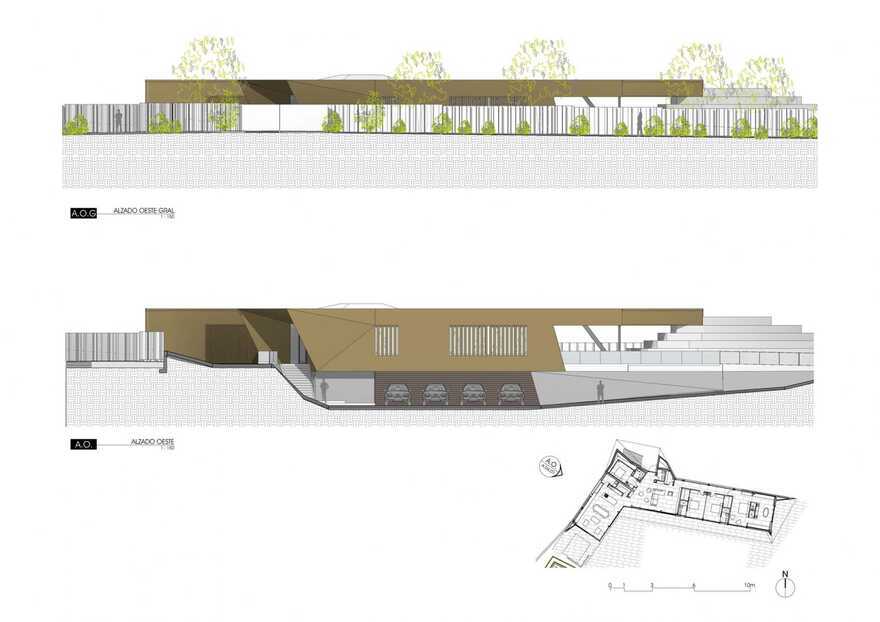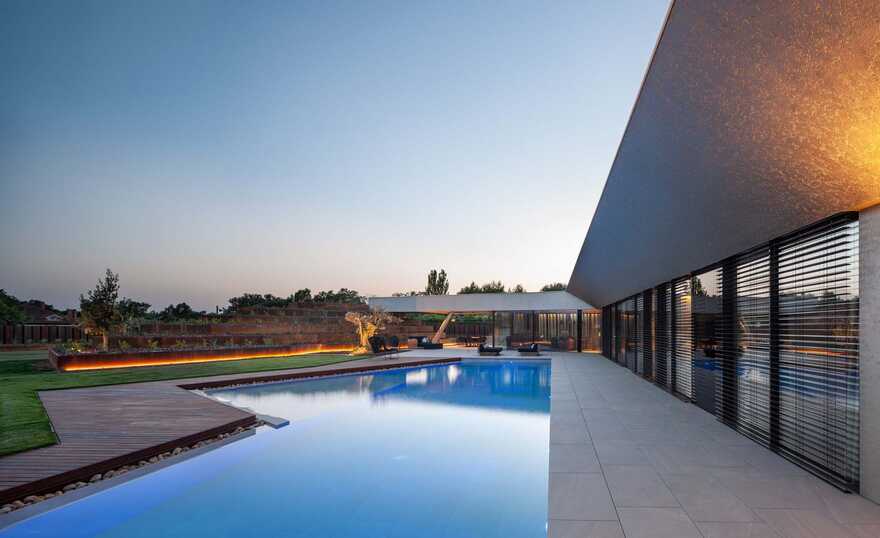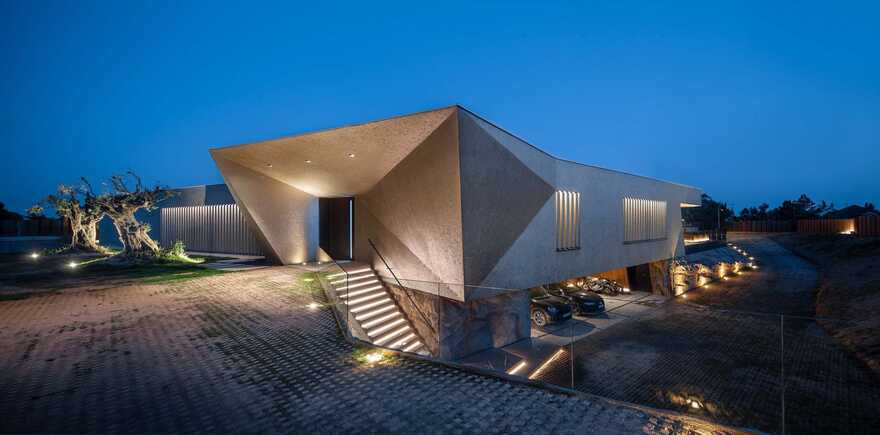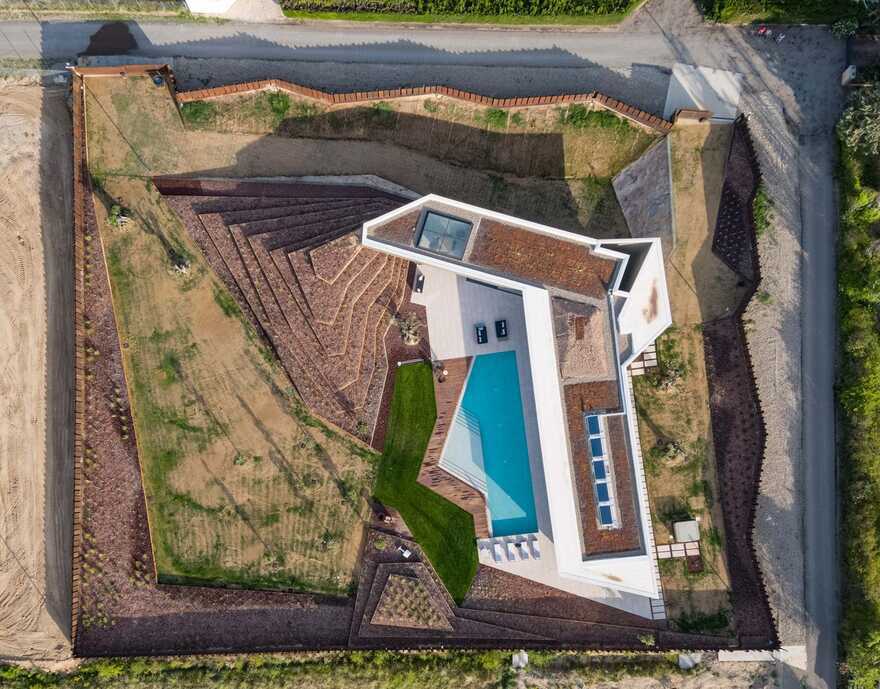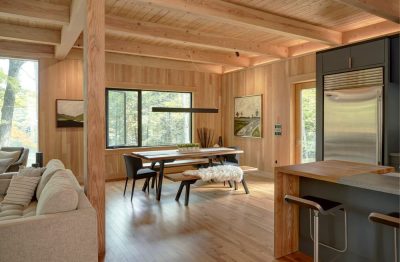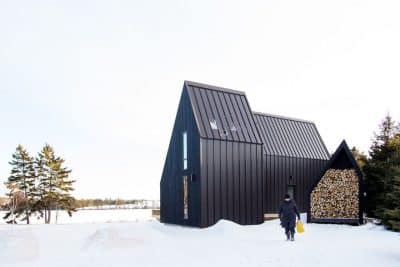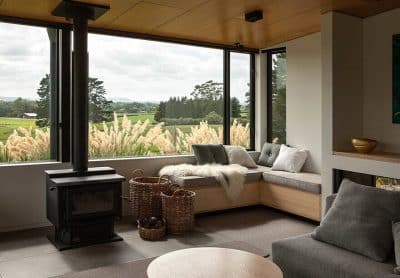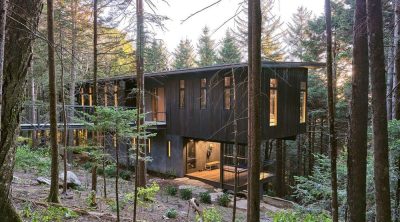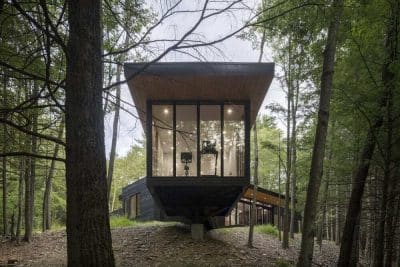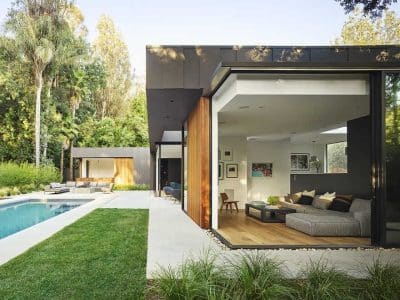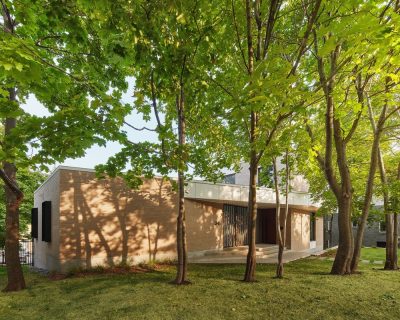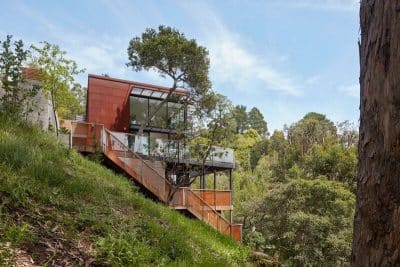Project: MXM Aragón Passive House
Architects: i2G Arquitectos
Project Team: Gorka Apraiz, Gilles Marchal and Iñigo Barberena
Builder: Construcciones Torla & Tena proyectos
Location: Aragón, Spain
Area: 434 m²
Date: 2019
Photography: Josema Cutillas
In the autonomous community of Aragón, in the north of Spain, i2G Arquitectos designs the MXM Aragón passive house.
Is it possible to design a house with bioclimatic concepts and based on the basic principles of passive houses, but with an innovative design character and with a fluid relationship between the exterior and the plot?
Traditionally, proposing a house that contemplates these design principles and that is visually permeable or that has a direct relationship with the exterior, has been counterproductive and since, in essence, it is necessary to have a compact design with dimensions of bounded gaps (which entails airtightness of views).
The answer is a Contemporary, Passive (high energy efficiency / EECN) and Eco-designed single-family house, which is implanted in the ground on a single floor, integrating itself into the environment and whose development on the plot responds to the study of the guidelines for optimum use of solar capture, as well as criteria of functionality and distribution of spaces, which generate a harmonious relationship between interior and exterior.
This house also has an outstanding avant-garde appearance thanks to the roundness of its geometric shapes and the materiality of its finishes, with textures and the effect of variation in the face of solar incidence.
Its envelope is materialized in a reduced number of materials, colors and textures in order to seek a high level of visual harmony and allow its calm integration into the environment.
The Aragón passive house is located in the maximum north alignment allowed and has a ’L’ plan looking for the best orientation in terms of sunlight. The Northeast and Northwest facades are mainly blind, while the Southeast and Southwest facades are glazed and open onto the private garden.
In the linked urbanization, landscaping is understood as an extension of the architecture itself in perfect harmony with the house. Complemented with a careful work of xeriscape (that in some way does not require additional irrigation), terraced areas and a pool.
Regarding environmental aspects, the development of the project is carried out according to Ecodesign criteria and betting on a design based on the basic principles of passive architecture aimed at a building with “almost zero” energy consumption, through continuous thermal insulation of -high performance in the envelope, elimination of thermal bridges, control of air infiltrations, controlled ventilation with heat recovery, high-performance carpentry, optimization of solar gains (from interior temperature) and energy modeling.
The passive direct contribution systems are characterized by the large values of glazed area to the South, which has a cantilever that reduces the solar impact in the summer months. In east and west orientations, the exterior Venetian motorized cable-guided blinds with sunlight control are housed to counteract the effects of the sun when necessary.
The excavation necessary for said plant is relocated in an artificial topography formed by corten steel benches, so that the excavated land is reused in the urbanization of the plot itself.
The support of the building is solved by shallow foundations using reinforced concrete footings. At the structural level, the pillars are made of rolled steel profiles. As for the roof slab, it is solved by means of mixed elements of laminated wooden beams and wooden panels (boards) that combines the advantages of prefabrication with the comfort provided by the wood material, in addition to constituting a sustainable construction solution. and high thickness of thermal insulation thanks to the insulation incorporated in the interstices of the wooden beams. And to complement the insulation system included in the supporting structure of wood panels, another continuous insulation is placed under the waterproofing.
The great lights of the characteristic designed flights could only be solved thanks to this light wooden structural framework.
To resolve the vertical envelope of the project, a system of façade made of contra-laminated wood paneling is used on the outside and with a self-supporting internal cladding. For the facade insulation, a solution of a high thickness exterior insulation system (180 mm) is proposed.
The roof has a vegetal finish, consisting of low-maintenance upholstery plants that allow maximizing ecological benefits.
Essentially a primary order of perimeter beadwork of laminated wood beams has been proposed. A secondary order by means of a structural box with ribs, orthogonal to the primary order, filled with cellulose insulation (400 mm) and closed by means of a lower panel and an upper panel. The overhangs or eaves are solved aligned on the axes of the previous secondary order, by means of panel ribs, embedded in the main order and triangulating the surface with a lower board and upper board.
A double insulating panel (140 mm) is implemented on the concrete slab, and a radiant / cooling floor heating system, which includes an insulating tube holder panel (20 mm) and porcelain stoneware flooring.
The exterior carpentry is broken down into different types depending on the facade where they are placed or the room they illuminate. When it is installed, a perimeter sealing gasket is installed based on a pre-compressed multifunctional expansive tape, sealed by means of elastic foam and an additional air-tight sheet. The glazing is triple glazed with two low-emissivity glasses and with Warm Edge interlayer.
Among the systems or “active aspects”, the house has a heat / cold generation system using a heat pump with a geothermal system [vertical drilling 150 meters] for underfloor air conditioning and generation of DHW (by accumulation) and a Dual flow ventilation system with heat recovery [95% certified average efficiency] and cold water post-treatment battery to deal with heat “spikes” respectively. The system is complemented by five solar collectors.
The Aragón passive house, in its entirety, is domotic and has temperature, humidity and CO2 sensors.

